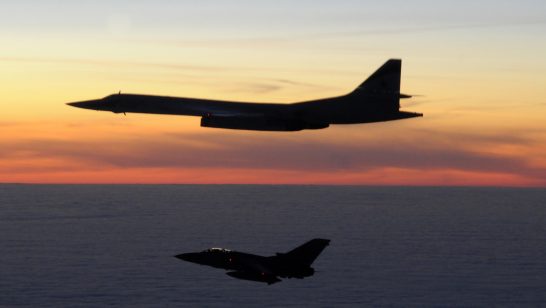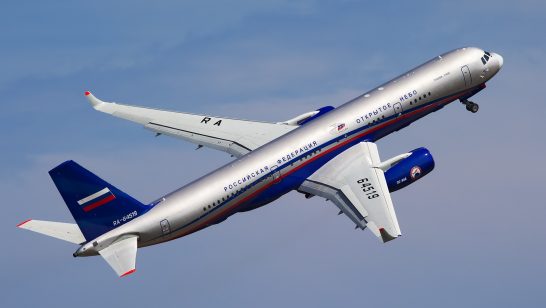
Dangerous military-military and military-civilian incidents involving ships or aircraft of Russia, NATO member states, and third parties continue to pose a serious threat to Euro-Atlantic security. They bring an inherent danger of loss of human life. Moreover, their broader escalation potential should not be ignored, particularly during the current period of Russia-West tensions.
Building on consultations with experts and officials from several NATO member states, Russia, Finland, Sweden, the OSCE and NATO, the ELN has published a new report which is the most comprehensive public study of the problem to date.
The report includes a thorough audit of existing agreements on managing dangerous encounters and their implementation, as well as a number of detailed national case studies.
The report shows that:
- Despite the maintenance of several bilateral agreements on incident management between individual NATO member states and Russia, there are significant gaps in their coverage.
- This is not least because some NATO countries, including Poland and Romania and non-NATO states Finland and Sweden, do not have such agreements with Russia.
- The restricted nature of existing agreements and their failure to properly account for civilian activities is a serious cause for concern.
Key findings:
- Even though no NATO-Russia agreement on managing incidents exists, two kinds of bi-lateral arrangements between some member states and Russia are in force. These are the Incidents at Sea Agreements (INCSEAs) and the Agreements on Preventing Dangerous Military Activities (DMAs).
- These bilateral agreements (INCSEAs and DMAs) remain in force only between a small number of NATO countries and Russia (12 INCSEAs and 4 DMAs).
- Signed mostly during the Cold War period, the agreements reflected the circumstances and military capabilities at the time. There are questions about their practical effectiveness with significant gaps found in their coverage that leaves many incidents unregulated.
- Among the countries not covered by such agreements are those who find themselves on the “frontline” of the renewed confrontation with Russia: Poland, Lithuania, Latvia, Estonia, Romania and Bulgaria.
- Unlike the INCSEAs, which only manage encounters in and over the high seas, the DMAs address possible confrontations over land and territorial waters. By extending the geographical scope of the crisis-management mechanisms, the DMAs code of conduct governs activities of all armed forces, not just to Navies or Air Forces. Yet only 4 out of the 28 NATO countries have DMA agreements with Russia.
- The US-Russia 1989 DMA agreement remains relatively underused. Some of its more comprehensive and potentially useful features have not yet been activated and the consultation/review commission of the US-Russia DMA has met only twice since the agreement was concluded.
The report also notes that a separate agreement was reached between the US and Russia concerning the ‘deconfliction’ of their respective air operations over Syria in October 2015. Whilst the text of this agreement has not been released publically it is understood to stipulate that aircraft must maintain a safe distance; specify the use of specific communications frequencies; and establishes a communication line on the ground to be activated if other protocols fail. The swift negotiation of this agreement and its extension to cover other national aircraft involved in the US-led coalition showcases what can be achieved on a regional basis given appropriate political backing.
Key Recommendations:
- The parties to the existing agreements (INCSEAs and DMAs) need to ensure that their provisions are known to and applied by their armed forces.
- There should be zero tolerance for reckless behaviour of individual military commanders and personnel, especially by the Russian leadership.
- It is necessary to begin work on a thorough review and update of existing bilateral agreements in the Euro-Atlantic space, as well as to conclude additional agreements between Russia and the states most exposed to the danger of dangerous incidents and with relevant military capabilities.
- Expert-level dialogue on the safety of military-civilian encounters over the Baltic Sea, under International Civil Aviation Organization (ICAO) cover, should be continued and expanded to other regions.
- Re-activating or adapting the Cooperative Airspace Initiative may be helpful for preventing incidents and monitoring regional activities.
- As long as Russia-West relations remain tense, the conclusion of new or modernized multilateral agreements remains difficult. Still, the modalities of such arrangements for avoiding and managing hazardous incidents should be examined in more detail by joint groups of experts, possibly as part of Track 2 effort. This includes the update of the OSCE’s Vienna Document and work towards a NATO-Russia agreement on managing dangerous incidents.
- Political leaders should become more closely interested in the issue of avoiding incidents, and authorize civilian bureaucracies and militaries to work to improve management of incidents.
Download the report annex, detailing all relevent sections of the principle agreements, here.
*******
If you have any questions regarding this report, please contact the authors of the report:
Lukasz Kulesa, Research Director on [email protected];
Thomas Frear, Research Fellow on [email protected];
Denitsa Raynova, Project Manager on [email protected].





